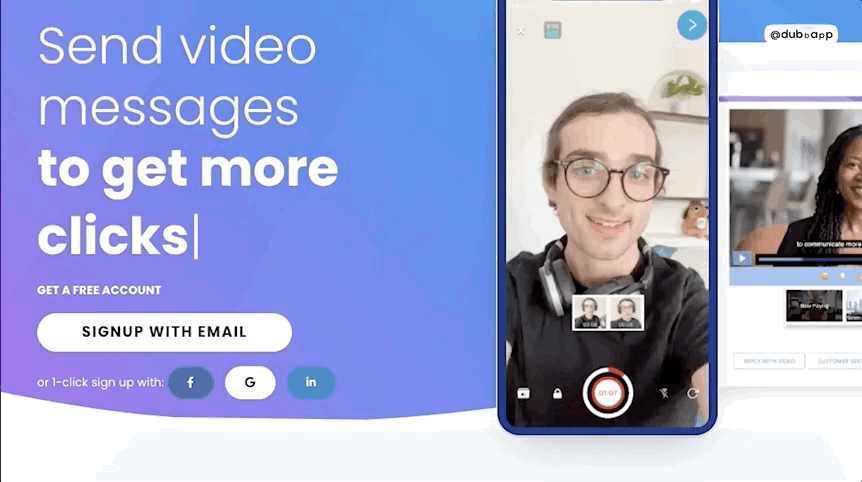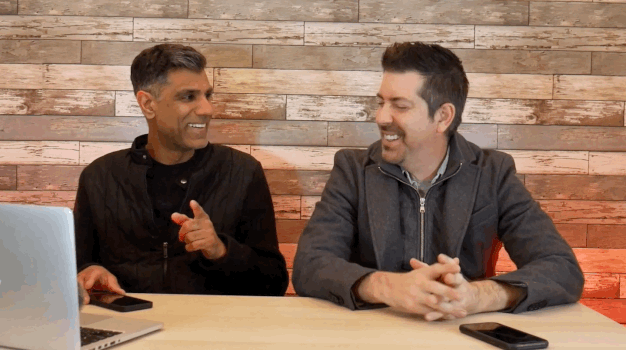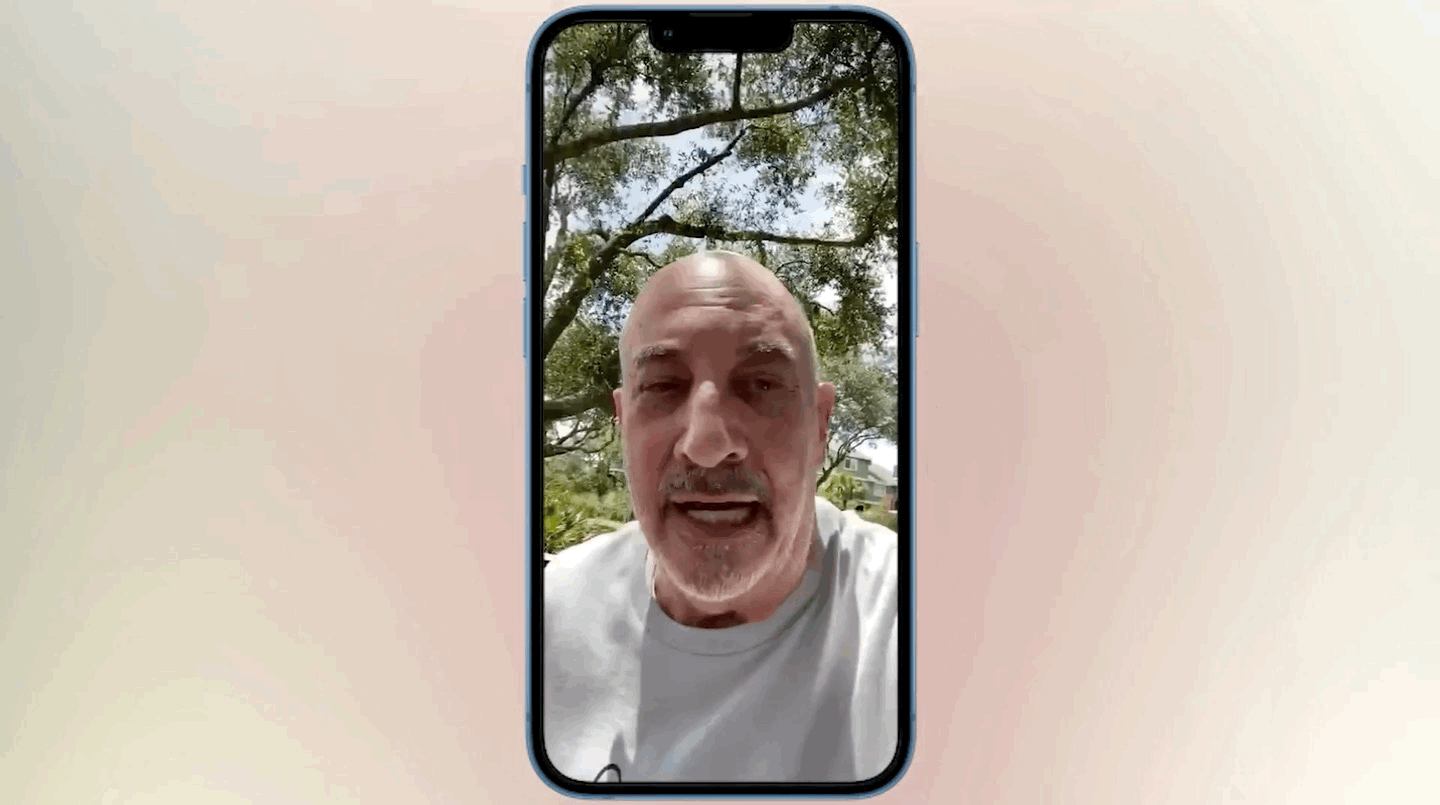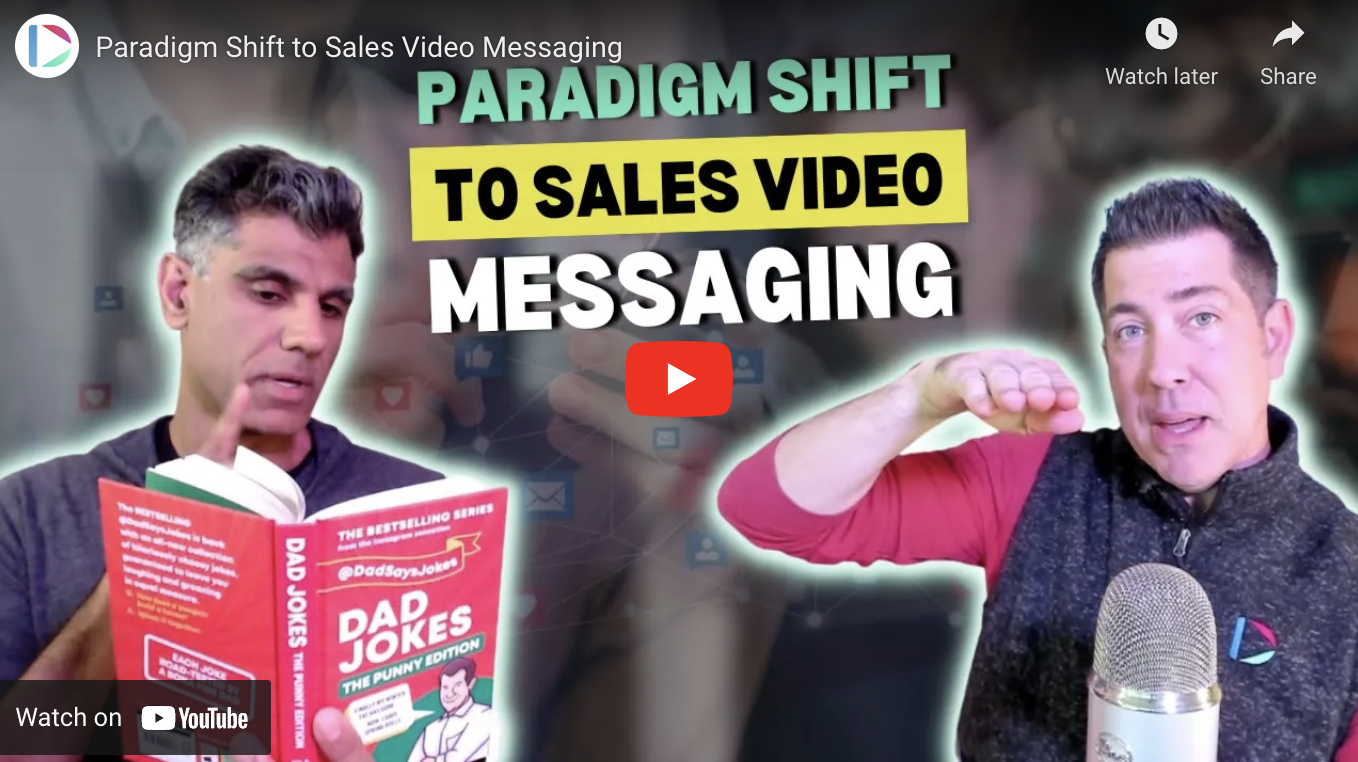In this recap of a recent episode of RevShow, you will hear about the paradigm shift to sales video messaging and how this shift can help advance your organization. If you would like to view the RevShow episode in its entirety, click on the video above. We’d also invite you to subscribe to future episodes of RevShow (which you can do by clicking here).

From Cave Paintings to Video
Back in the day, some of the earliest humans decided to make beautiful paintings on cave walls. Those cave paintings remain stunning to this day and show us the beauty and imagination of the human spirit. But beyond these overarching themes, there is a simple truth here.
Essentially, our earliest ancestors were relying on the visual representation of communication. They understood that visual communication is extremely engaging. It allows us to share stories and connect with others on an extremely deep level. Whether you are trying to connect with someone in your personal or professional life, video can be the tool to help you build that connection.
With that being said, over the years, there was an unfortunate shift. Communication became less visual and more about being efficient with the physical word. This is true from writing blog posts to sending emails to our colleagues and clients. Visuals took a backseat to a flood of text-based messages on all of our devices.
The good news is that there is another shift happening. What interrupted this email flatlining in business, however, was a rocket ship that was coming up. That rocket ship was video.
Ultimately, video is the tool that replicates those early cave paintings but in a way that is even more engaging for your customers. It is also a more efficient way of communicating, making it easier for you to get your message out there and generate more sales. Even if you work in a “stodgier” industry, video can be just the tool you need to take your business to the next level.
In the end, all of us need to be paying attention to this paradigm shift to video sales messaging. Video sales messaging can be the springboard you and your colleagues need right now. How so? Among other things, this shift can help sales and marketing leaders motivate their teams, better serve their customers, and hit their goals. It’s important to pay attention to this paradigm shift to sales video messaging, whether you have been using video for some time or are thinking about incorporating video into your sales processes.
Why This Paradigm Shift Occurred
In this early stage of the discussion, you may be asking yourself: why has this shift actually occurred? In other words, what is it about video that makes it more effective and engaging than text-based communication like emails or SMS messages?
Ultimately, I believe that the shift likely occurred because of three specific factors. Those things are trust, lack of emotion, and the effectiveness of communication.
For starters, let’s talk about trust. Trust is one of the primary reasons why there has been this shift from text-based communication (specifically, emails) to video.
Here is how I think about this. It is way too easy to ignore someone’s email message, an unsolicited DM on LinkedIn, or a text message. This is especially true when you receive a text-based message from someone that is trying to pitch you or sell you something.
The reason why we ignore these messages is that there is no humanity there. To put it another way, there isn’t a human being that is communicating with you. There are simply words that you read on your laptop or smartphone. Sure, we read these words, but it doesn’t mean that we are forming a connection with the person that is stating them.
Here’s another way to think about it. There is no etiquette in ignoring someone. Our parents and our teachers never said, “Hey, it isn’t proper to ignore other people’s emails, LinkedIn messages, and SMS messages.” Instead, what they taught us is that it is improper to ignore another person.
That is why video is such a more effective way of building trust. It is because people will actually look at you like you are a human being, rather than looking at you like you are a bot. To reiterate, when you are hiding behind text-based communication, what you are effectively doing is hiding behind those letters. Those letters in your email or in your LinkedIn message may be expressing really important ideas, but because of the way that they are being presented, you make it much more difficult to actually accomplish your goals.
On the other hand, when you send a video to a particular prospect or client, you will find it to be so much more effective. This is because you are communicating in a way that humans were originally supposed to communicate. You get to incorporate emotion into your sales work. There are so many ways to do this, whether you want to share your company’s origin story or how your product or service drastically changed one of your customers’ lives. Exchanging emotional and visual stories is a fantastic way to build genuine relationships with virtually anyone.
Better yet, using a tool like Dubb, you can do this at scale. Video lets you build that emotional, authentic connection with a whole host of people at the same time. Rather than having to individually pitch every single prospect through separate videos, you can do so by leveraging personalization text and creating a value-added video for your entire audience. It is effectively a way that you can clone yourself and deliver your emotional message at one time.

But ultimately, video lets us leverage visualization, which is the biggest thing here. You simply don’t get that with text. Visualization lets us more effectively deliver our message because our prospects, customers, or audience members can picture what is happening.
So let’s summarize here.
When you use text-based communication (whether it is SMS or email), it becomes much more difficult for your audience to trust you. From your end, it is hard to include emotion in text. Simply put, text is a less effective way to communicate with colleagues, prospects, and customers.
By contrast, video creates that connection and emotion. That is something that we have stated over and over because it is such an important point. By using video, you can be in control. You can control the visualizing narrative, and in sales, it is all about controlling the narrative, right?
At this point, I know what you may be thinking. You may be thinking that text isn’t a visual format.
Let me take this moment to clarify something. When we read books, articles, or blog posts, it may turn out that those formats are the most visual ways that we can consume content because of our imaginations.
The problem, however, is this: sales messaging typically does not elicit imagination. The key here is to present visuals so that you can replace someone’s imagination. Why should you do this? You should do this because it is going to make an impact and make your content and message more emotional. And with that, you get trust.
The big thing to remember here is whether you are using effective communication or affective communication. There is a big difference here, but the difference is simple. It can be encapsulated in the phrase “If you pitch, they ditch.” But more on this later in the article.
The Connection Between Sales and Video Messaging
Now that you understand the “why” of the paradigm shift to sales video marketing, let’s take a step back.
One of the main reasons that the rocket ship of video and visualization took off is because of the flatlining within email marketing.
So why was it flatlining?
Think about this for one second. As a reminder, we started out communicating visually on cave paintings and hieroglyphics. But until recently, we ended up with text-based messages. Those text-based messages are ubiquitous, yet they aren’t ideal for the way that we communicate. When you text someone or send someone an email, it is all too easy to have that message misconstrued. Even if that message isn’t construed, it is hard to translate real, genuine emotion through that text. While you may be extremely excited about your product or service, that excitement may not come through on the page.
Considering all of that, why has video lagged behind text in the sales context? The reason why that happened comes down to lack of technology and lack of adoption. People in certain job titles decided not to use video. They had limiting beliefs. Essentially, they believed that video needed to be formally produced. They believed that video needed to be put together by a department (or departments). There needed to be all sorts of production requirements to actually get that video produced.
We’re living in a different time. Now, we live in a time where sales messaging and video are connected. With this paradigm shift, you don’t need to spend thousands of dollars on sets, actors, and scripts. Instead, what you can do is pull out your cell phone, speak directly to your phone, and distribute that video to your audience (no matter how big it is). It is an extremely empowering way to create awesome content and improve your audience’s lives.
The connection between sales and video marketing is here to stay. This paradigm shift was huge when it happened and it remains huge today. Sales leaders and sales professionals should certainly pay attention.
Moving From Ideas to Execution
One of the big things to remember here is that generally speaking, video communication is omnipresent. It is all over our world. You can look at things like social media and even communication amongst our friends and family. Simply put, any kind of meaningful communication in this world is done by video.
So considering this, why shouldn’t your sales communication be done through video? The unfortunate reality is that many sales professionals are passing on this huge opportunity. Conservatively speaking, we estimate that less than three percent are using video to make connections in business and sales. It’s baffling because video is the most effective way to communicate.
Ultimately, people have evolved, but the sales industry has not. Even though this tool is omnipresent and free for sales professionals to use, many opt for the older-school ways of communicating with their prospects and clients.
Now, I have worked with countless numbers of sales leaders. When discussing this opportunity with them, I have often heard that they don’t yet feel comfortable having their sales staff use video. This subtle discomfort often overrules the benefits that they think they’ll receive from video. Because of this, they may choose to move on and forego everything that video has to offer.
So where does this fear come from? I think that it results from being concerned over what goes in (the training) and what comes out (the content). The fear here is that the messaging will be off-brand. Even considering this massive paradigm shift, those fears can bubble to the surface.
At Dubb, what we have learned is that your sales team is your biggest asset. Its personality, core characteristic, and tenacity help differentiate your company from your competitors. By foregoing video, you and your sales team are essentially trying to communicate through exclamation points in an email. Those exclamation points don’t mean much. Further, those exclamation points can be misconstrued in so many different ways. While it may seem quick and easy to rely on them, you are missing out on so many different ways to engage and build relationships with your prospects and customers.
By contrast, with video, there is clarity. However, clarity requires personality. It is important to remember that within any given company, there are different personalities. There are differences that make up the kaleidoscope of your company. You can make an impact by relying on those different personalities to deliver your message through video. In other words, you embrace the differences and recognize that the sum of those differences makes up the whole.
Even though it may seem like a weird adjustment at first, I encourage you to give it a try. Embrace the differences in your sales team and encourage them to show off their personalities on camera. I think you will be extremely excited with the results.

Mindset and the Paradigm Shift to Sales Video Messaging
From here, I want to talk about mindset. It is one of our favorite things to discuss and I want to approach it from a different perspective in this context.
I want you to think about this question. When you see an opportunity out there, what is the thing that you always want to have happen? The answer? You want to have your eyes wide open. While you may not be able to foresee every opportunity that falls into your lap, you want to be ready to capitalize on those opportunities. In other words, you don’t want to have blinders on.
What we are asking all sales leaders and sales professionals to do is open up the barn doors. We need to be open to the possibility that video and video content can accelerate us toward our sales goals.
To better contextualize this discussion, I want to explore three different stories from Dubb users who have opened their barn doors and embraced this paradigm shift to sales video messaging. They have achieved massive success doing so and there is nothing stopping you from following in their footsteps.
Chris Kirkpatrick
The first story is from Chris Kirkpatrick, who is the president and founder of LIFE180. LIFE180 is all about helping entrepreneurs live intentionally for excellence (which he shortens down to the acronym LIFE).
As Chris told us, he was initially struggling to find the right way to acquire new customers for his business. He first started sending his prospects email messages. He quickly came to realize, however, that nobody was responding to those emails. He then started picking up the phone and dialing his prospects, but achieved the same result.
So Chris decided to do something completely different. What Chris did is he purchased Amazon Fire tablets, became a Dubb user, and started recording videos. He then took the link of his recorded videos and put them in a file on his Fire tablets. From there, he sent his prospects a Fire tablet, and when they opened their Fire tablets, their Dubb videos started to play.
As Chris told us, that strategy led to a $3.4 million deal. Chris and his team closed that deal less than 30 days after sending out the tablet and Dubb video. This is a creative strategy, but it isn’t rocket science. Anyone can follow the same strategy, so long as you have the commitment and vision to see it through.
Jeffrey Gitomer
The next story is from Jeffrey Gitomer. If you haven’t heard of Jeffrey, he is widely known as the “King of Sales.” He is a New York Times bestseller and a true expert in how you can improve your sales skills. If you would like to learn more about Jeffrey and how he is able to achieve such impressive sales numbers for his business, I encourage you to check out some of our other blog posts on Jeffrey.
As Jeffrey told us, he made $350,000 using Dubb. He did this in a creative way. Essentially, he recorded a Dubb video and decided to attach a proposal to that video. There is a specific reason why he did it this way. The strategy is that Jeffrey does not send a proposal and then add a video. Instead, what he does is send a video and then attach a proposal.
Jeffrey admits that this strategy is quite unorthodox. However, it is extremely effective. When interacting with a specific prospect, Jeffrey starts out by saying, “Look, I have a boring proposal that is attached to this video. However, it isn’t quite self-explanatory. Let me explain what happens after you decide that I’m your guy.” What he is doing here is making the video the central part of the customer interaction. He understands that through video, he can build a real connection with the prospect, which drastically increases his chances of closing the sale.
Ultimately, this strategy paid off for Jeffrey. He recorded $350,000 in sales following this strategy and he expected much more in the future. Jeffrey believes that by making videos that are compelling, emotionally engaging, and that hit the customer in the head, heart, and wallet, you will be in an outstanding position to generate more sales. He has seen the results himself. Ultimately, it all happened because Jeffrey decided to take video to the next level.

Paige Battcher
The final story is from Paige Battcher. Paige is the founder of Kismet Ideas, which is a collaborative design agency.
Like Chris and Jeffrey, Paige had this mindset shift around video. She intuitively understood that the paradigm shift to sales video messaging was something that she could leverage in her business.
The results have certainly paid off. Paige thinks that the most incredible thing is that she has made and generated tens of thousands of dollars from videos that she recorded in one take. In those videos, she wasn’t wearing makeup. She didn’t even think that she was going to make a video that day. She recorded the video, however, linked it, and released it to her prospects and audience members.
That was a huge step. As she said, “I then realized, ‘Oh my gosh, people don’t care for it to be pretty or perfect. They just want to know if you can help them, and then they want to take the next step.’”
I think this is a really important point. There are all of these expectations about creating the “perfect” video for your prospects or customers. The truth is that you don’t need to invest significant amounts of money and time into creating your video content. In fact, some of the best videos out there are those that were recorded in just a few minutes. As Paige referenced, so long as you are adding value to the viewer, you can expect great things to happen.
In the end, by properly using video in the sales and marketing context, we get to capitalize on the three Rs. They are revenue, retention, and referrals. You can grow your sales, retain more clients, and get even more clients through word-of-mouth. Chris, Jeffrey, and Paige intuitively understand this. You can certainly join them, as the opportunity is there for the taking.
Ditch the Pitch
I want to wrap up this discussion by talking about something that is core to the paradigm shift to sales video messaging. It is something that we have gotten used to as sales professionals, but something that will harm your efforts to generate sales through video content.
In sales, we have often been taught that we must persevere. We must be tenacious and fight to deliver our pitches to our prospects and clients. We all hear the stories about the sales professionals who pitched a certain prospect tens (or hundreds) of times and ultimately got the sale.
The reality, however, is quite different. I believe that the more you fight to pitch, the more likely your prospects are to ditch. Constant pitches will turn off your prospects and make it more likely that they will tune your pitch out. If you overdo it, it can permanently harm the relationship.
The key here is to be tenacious and to be a listener, rather than a pitcher. You want to listen to what the prospect says, rather than constantly thinking about how you can wedge your product or service into the conversation. Remember this: what you put out into the world is what you are going to get back. If you pitch, they ditch.
Illustrating This Idea Through Zoom
I think that a great way to illustrate this concept is by looking at Zoom. In the past several years, one of the things that all of us have experienced is Zoom fatigue. We are exhausted being in those teleconference meetings where we spend 30, 60, or even 90 minutes being with a group of people.
Granted, camaraderie is everything. If you really think about it, our souls need it. But simultaneously, at some point, we need to focus on productivity. We need to get beyond Zoom meetings and focus on delivering the most value that we can to each other.
Considering this, there are two revelations that I can share with you. First, sales professionals often fight to get someone into a Zoom meeting or a teleconference. The goal? It’s what you likely expect. They want to pitch their product or service to their audience. Remember: if you pitch, they ditch. Even though it may seem like a major win to get into a Zoom call with a key prospect, prioritizing the pitch and overselling can be a one-way ticket to a rejection.
On the other hand, what if you had the confidence to replace that meeting with an asynchronous video? In other words, what if you could replace Zoom with a pre-recorded video that you send to your audience preemptively? The video isn’t the ultimate deliverable, but you can use it as a way to excite them and get them to schedule a meeting with you. The tool that can help you with this, as you may guess, is Dubb.
Tools like Dubb highlight the main advantages of asynchronous video over synchronous video tools like Zoom. For starters, asynchronous videos let you deliver more value upfront. You can avoid pitching entirely and create a short, value-added video that can significantly improve your viewer’s day. Instead of feeling the urge to pitch in a Zoom meeting (after all, you spent lots of time trying to get everyone in the same room at the same time), you can take a more patient, value-added approach.
Not only that, but there are other key benefits here. Remember: that Zoom call can also be your Zoom prison. Once you are in there and trapped with everyone else, it becomes much harder to deal with other important tasks throughout your day. Even if you need to take a break, you may lose some of the valuable content that was discussed in the meeting. There is a different story with asynchronous video. With an asynchronous video tool like Dubb, you can consume the content, pause it, do what you need to do, and come right back to it. You won’t lose a thing by doing so.
Asynchronous video also helps you become more efficient when you are prospecting. When you are sending a prerecorded video to a prospect, your prospect will come to you in your meeting as a pre-framed prospect. The prospect will know about you, your company, and the products or services that you provide. With that, you get a qualified lead. It is something that we talked about in our quantum selling video and blog post (which you can find here). Essentially, what you are doing here is that you are compressing the amount of time that it gets from someone learning about you and your company to opening a business relationship with you. Basically, what you are doing is creating the ultimate conversion environment.
The great thing about sending an asynchronous piece of content through video is that it is like a trailer for your movie. It gets your prospects going and gets them interested (as long as your trailer doesn’t show too much of the film). It intrigues them, gets the relationship on a great foot, and makes it more likely that your prospect will actually buy your product or service.
So think about this for one second: there are a few problems with Zoom meetings and teleconference meetings for your sales pitches.
For starters, they are not efficient. Moreover, the logistics are challenging. You need to coordinate a time that works for you and your audience members. They may flake out on you or you may need to change your schedule. It isn’t easy, and one of the toughest things to do is convert a phone call into a new client. This is because if they can’t see your product or service, they can’t believe it. And if they can’t visualize it? They can’t buy it.
So remember: if you pitch, they ditch. And if you connect, they affect. Asynchronous video lets you connect with your prospects, deliver value upfront, and put you and your company in a great position to make a sale.
Key Takeaways
The paradigm shift to sales video messaging is a huge shift that sales professionals cannot ignore. From the world’s largest companies to the world’s smallest startups, everyone can capitalize on this shift to accomplish their sales goals.
Considering all of this, here are two key takeaways from the paradigm shift to sales video messaging.
First, we are living in a technological revolution. Video is the ultimate storytelling tool that can help you build close relationships with your audience. It offers so many benefits that text-based communication simply can’t offer.
Second, we are also living through a mindset change. The tech is there and easy to use. In fact, I encourage you to go to Dubb and get a free trial of our 14-day premium plan. The mindset, however, takes some more work. That becomes creating an environment of providing value, being empathetic, and opening your eyes, ears, and heart so that you can become a better listener. By becoming a better listener, you can become a better leader. And a good leader? A good leader is a good growth driver.
Remember: we are in a visual communication and connection revolution. The world is changing and the odds are with those who change with it. Take advantage of this massive trend today.
At Dubb, all of us love talking about sales, marketing, and the paradigm shift to sales video messaging. If you have any questions about the topics discussed in this article or Dubb in general, feel free to contact us here. You can also learn more about Dubb here and get a free 14-day trial of our premium plans by clicking here.


